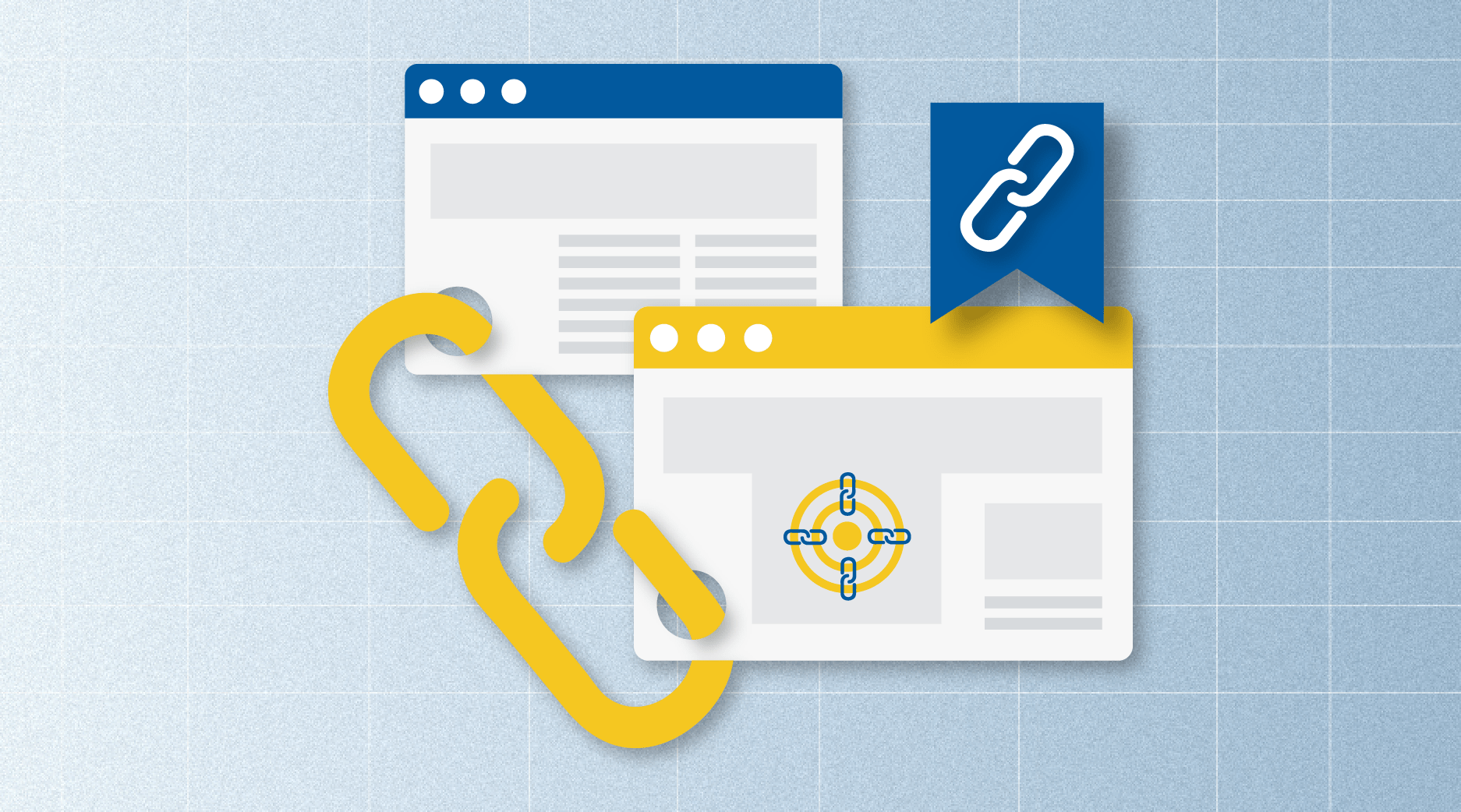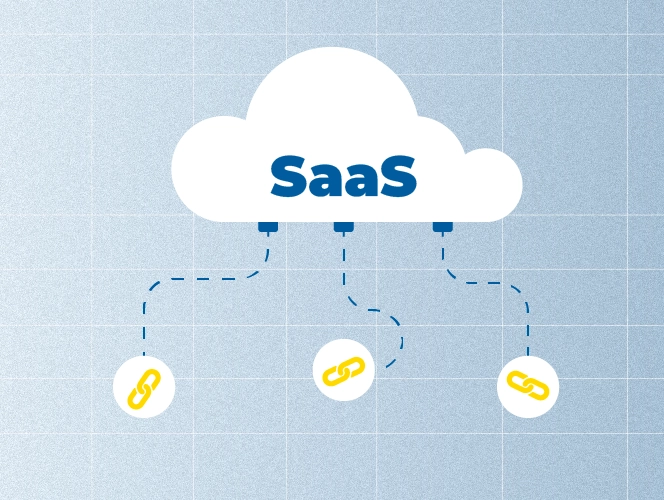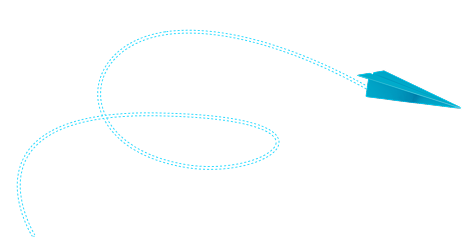Link building might sound straightforward, but there’s actually a lot of strategy behind it.
In this blog, we’re sharing how we approach a link building campaign, from the moment we onboard a client, to the outreach we do, all the way to the links we build.
Curious to learn how we do it? Let’s get into it!
What is a Link Building Campaign?
A link building campaign is a set of SEO strategies and strategic efforts to get other websites to link back to yours, helping boost your site’s rankings and authority.
It involves various steps, such as creating a good link building strategy for onboarded clients, reaching relevant sites for backlinks, doing link exchanges, and monitoring and reporting the progress. Paired with proper backlink management, these efforts focus on quality links that drive sustainable SEO growth.
How to Start a Link Building Campaign: Our Approach
Launching a link building campaign should not be a headache. Here’s what our typical workflow looks like.
Step 1: Onboarding Clients & Building a Strategy
When a client signs up for our link building services, we start with a strategy call. This is where we set clear goals, identify their most important pages, and build a good link building strategy.
The same process applies to those who aren’t clients but need guidance on link building. If you have a project and aren’t sure where to start, we’ll help you develop a solid SEO backlink strategy.
During this process, we also make sure we’re focusing on the right pages. For example, a client might share 15 pages, but only 10 really matter. We clarify this from the start so there’s no confusion later.
Next, we look at key factors like keyword difficulty, the number of backlinks needed, and the client’s budget. Based on this, we recommend the best solution and adjust our link building strategies to fit their specific needs.
One of our clients wanted to rank for the keyword “logo design”, which had a difficulty of 94—meaning competition was fierce. Knowing this, we recommended building 30 backlinks per month to outrank competitors.
And guess what? They went from page 3 to page 1 on Google!
But not every client comes in with a clear plan—and that’s okay. That’s where our SEO manager steps in and offers expert advice on keyword selection, the balance between long tail vs short tail keywords, and anchor text optimization, as well as gives insights on how to execute a link building strategy that delivers the best possible results.
If a client isn’t sure how many backlinks they need, we break it down in simple terms, ensuring they understand the why and how behind every recommendation.
Then, to keep everything smooth and organized, we create an automated client sheet that updates in real-time. Clients can check their backlinks anytime, see exactly which domains they’re on, and track key metrics like Domain Rating (DR) and Traffic—all without having to ask for updates.
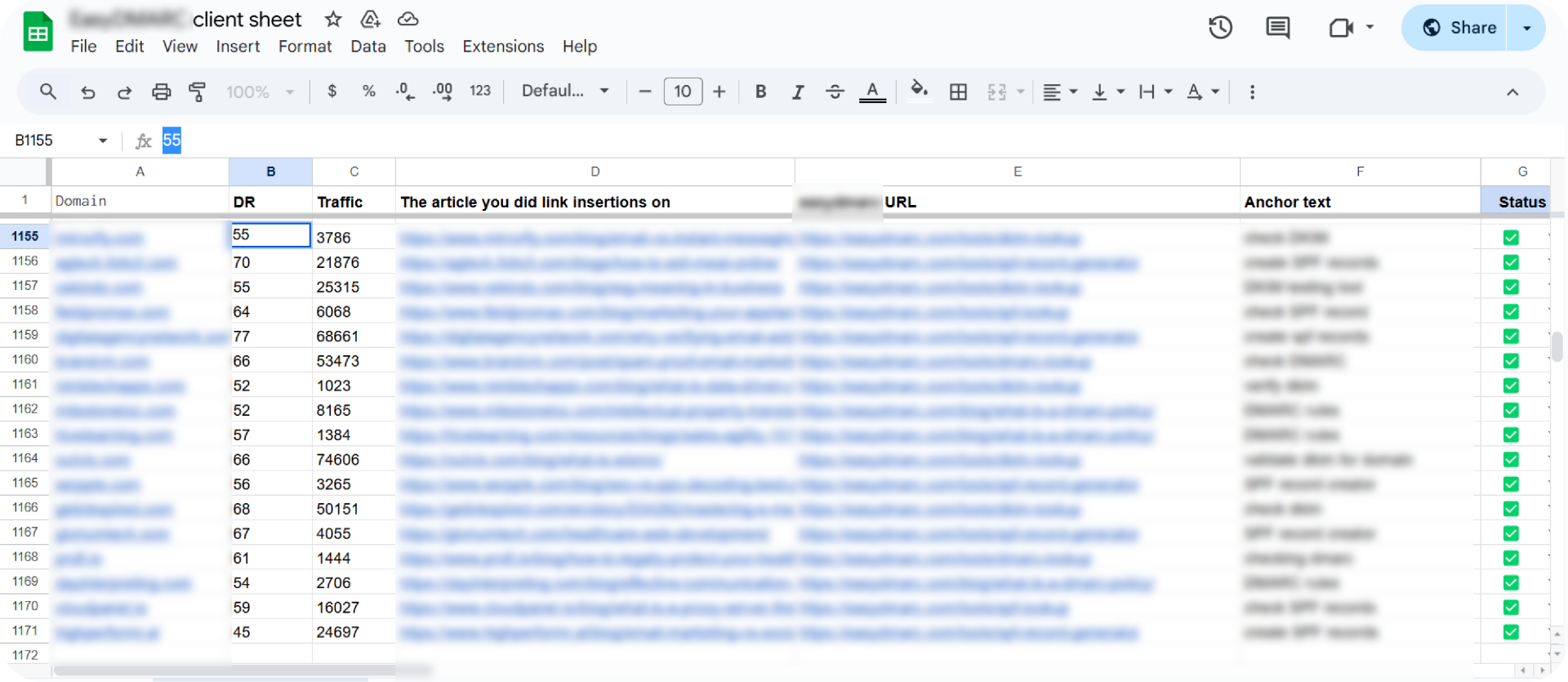
Plus, our Client Success Manager checks in mid-month with a progress update, keeping clients informed on how their backlink campaign is performing.
Step 2: Conducting Backlink & Website Audits
Before we start link building outreach and building backlinks, we always perform a detailed backlink and website audit for our clients.
These audits aren’t part of the standard backlink package, but we go the extra mile because we genuinely care about the success of every campaign. Our goal is to find any hidden issues that could negatively affect the client’s website SEO performance.
Why is this so important? Well, even the best backlinks won’t do much good if the client’s website isn’t performing well or if they have poor content. Various issues, including slow site speed, low-quality content, or keyword stuffing, can hurt rankings, so we ensure everything is optimized before focusing on link building.
If we find any issues, we offer recommendations. For example, one client had a lot of no-follow backlinks and just a few do-follow backlinks from irrelevant sources.

Don’t get us wrong: no follow backlinks are still needed in your backlink profile. While you don’t need to actively build them—since they naturally come over time—having none at all can seem suspicious to Google.
What we suggested was focusing on getting more relevant do follow backlinks from trusted websites, as they pass on ranking power.
For the bad do follow backlinks, we advised contacting the website admin to ask for backlink removal.
These small fixes helped us keep their SEO on track and made sure the backlinks we built would actually make a difference.
Step 3: Link Building Outreach
After auditing the client’s website and making sure there are no issues that could hurt our link building campaign, we start building outreach campaign the right way to ensure we contact relevant people for backlinks.
Here’s how it works:
First, we collect the necessary data using tools like Ahrefs and LinkedIn Sales Navigator. We then filter through the data based on key link building metrics like Domain Rating (DR) and website traffic to find the most relevant domains for link exchanges.
To make sure we’re targeting the right sites, we use bots, developed by our data team, which help us narrow it down to only SaaS websites and those from industries related to our client’s niche.
Plus, we double-check that the client doesn’t already have backlinks from these sites to avoid duplicates.
We also create a list of competitor websites to ensure we don’t reach out to them for backlinks.
Once we’ve got our list of websites, we identify the right contacts, such as SEO managers or link building specialists, at these companies. Then, we validate their emails to ensure our messages reach the right people and craft personalized emails with a clear, compelling link exchange offer. We also use link building outreach templates to ensure efficiency while maintaining a personalized approach in every communication. Moreover, a link building Chrome extension helps us quickly gather contact information and streamline the outreach process.
And, of course, we track key outreach metrics, like open rates, to understand how well our emails are performing and make changes if needed.
This is the basic process, but there are a bunch of details, nuances, tips, and strategies that we cover in our comprehensive link building outreach guide. Check it out!
Step 4։ Building Backlinks
Once we’ve got the green light from our link partners, it’s time to move to the most essential part of our SEO backlink strategy—building strong backlinks.
Google doesn’t love direct A-B or direct link swaps, so we play it safe with the A-B-C link exchanges. This way, we’re building relevant backlinks without risking to get penalties.
However, this wouldn’t be possible without our link builders, who put in the effort to build genuine relationships with our partners, and our content writers, who add our client’s target keywords into existing blog posts in a natural, relevant way.
Here’s how it all works:
Link builders add their requests in a shared Google spreadsheet. They add the domain(s) where they can get a backlink for a specific client.
Next, our content writers use a bot (developed by our data team) to find the ideal spot for the client’s keyword in an existing blog post. Once they find the best place, they add “Text before” and “Text after” to make it clear to the link builders and their partners exactly where the keyword was placed.Next, link builders contact their partners, sharing the ready text edit via email, LinkedIn messages, or Slack.
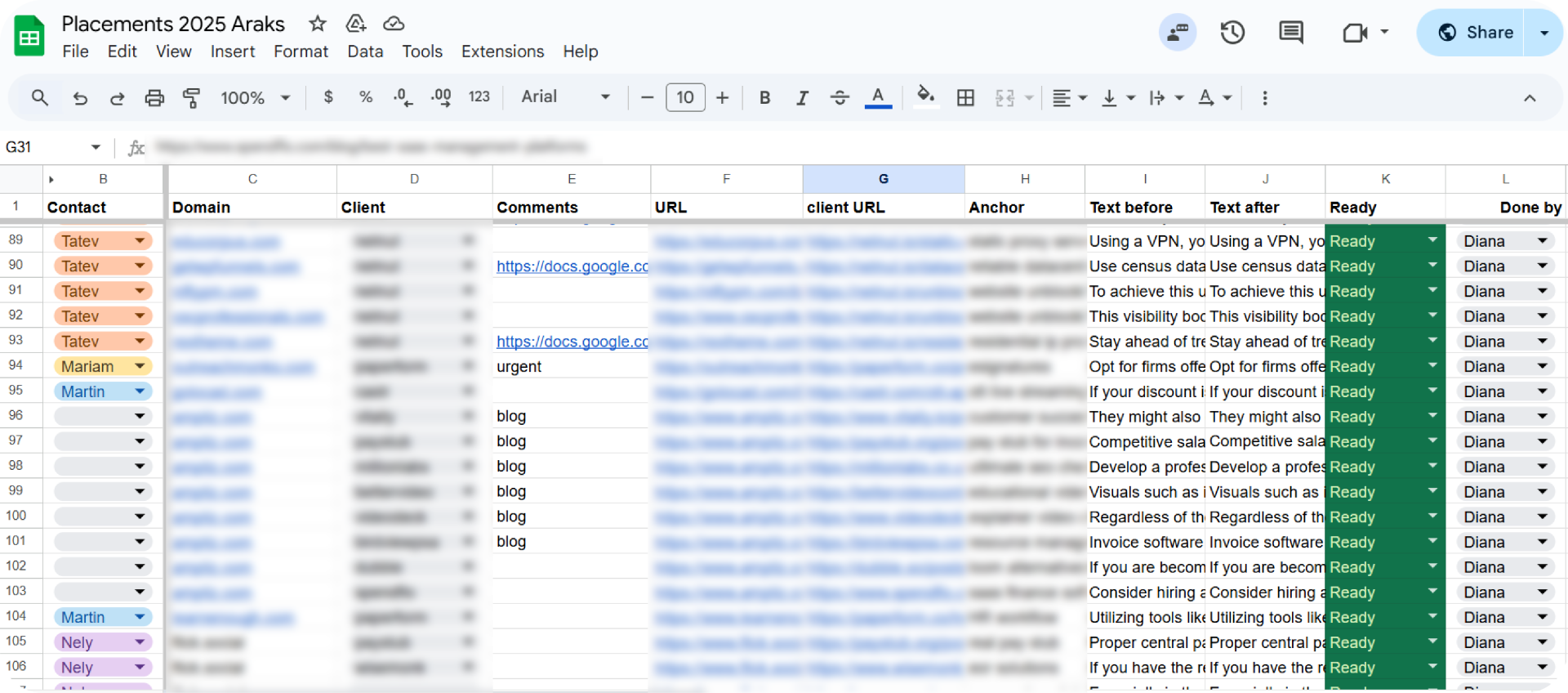
Since we have more than 1,000 partners, we create spreadsheets with each link exchange partner to keep everything organized. This helps us track how many links we owe each other and avoid any confusion. Not tracking link exchanges properly is one of the most common link building mistakes, often causing delays and unnecessary complications.
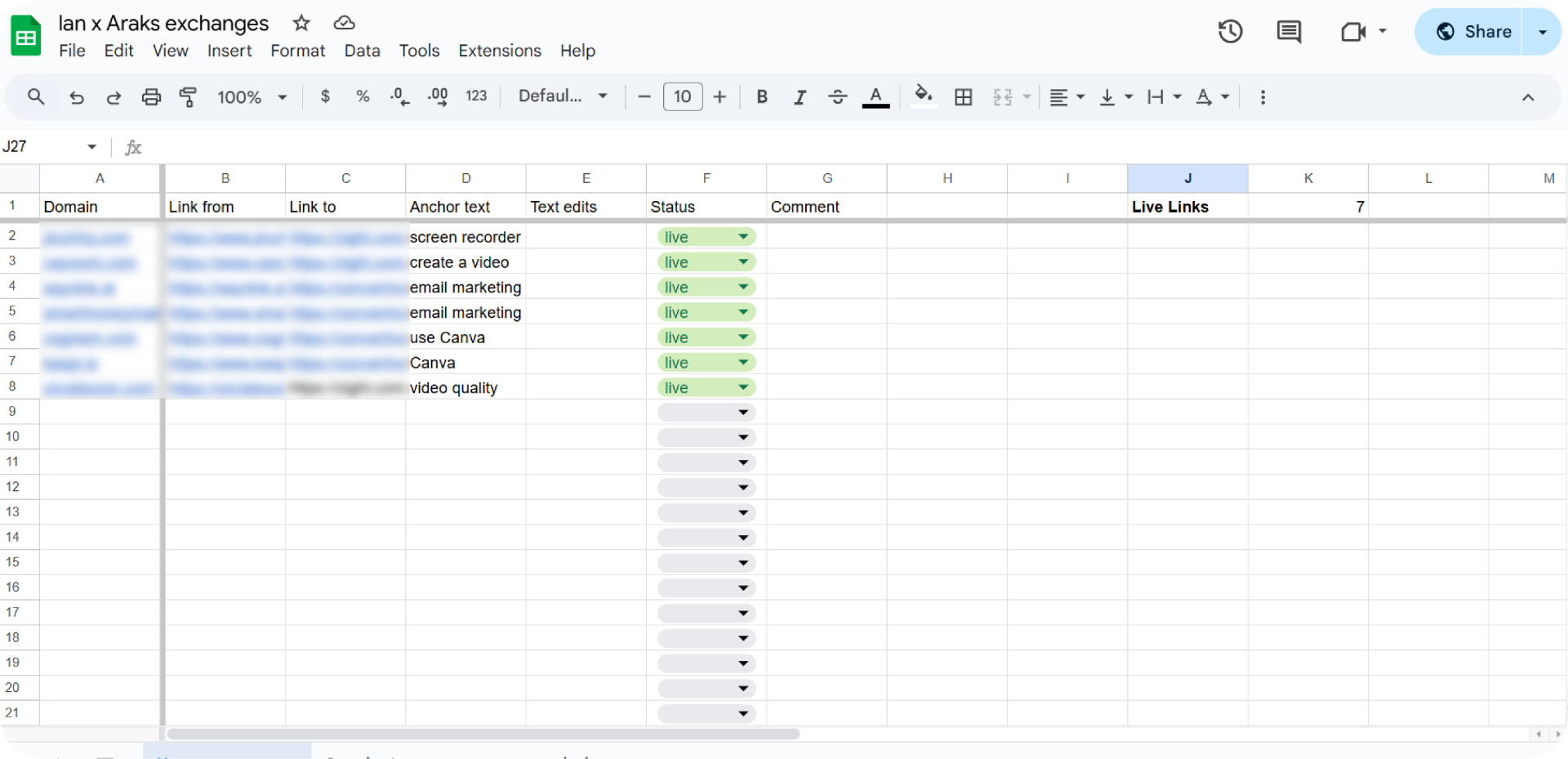
The most important part of this process is providing value to our partners. If you ask for backlinks but don’t give anything in return, no one will want to work with you again.
When you give value and keep things balanced, you build trust and strong, lasting relationships.
Further reading:
Relationship Building for Backlinks
Step 5: Backlink Reporting
Transparency is key to us. That’s why we provide clients with an automated client sheet that updates in real-time. This allows them to track their backlinks whenever they want, without having to ask for updates.
To make sure everything stays on track, our Client Success Manager (CSM) also provides a mid-month progress update. This ensures clients are always informed about the link building campaign.
When the backlink batch is ready, our CSM shares a detailed backlink report, including key updates on:
- Domain Rating (DR) change
- Traffic change
- Target keyword(s) position change
- Total number of backlinks provided
- Number of backlinks built for each anchor
- Number of backlinks built for each URL
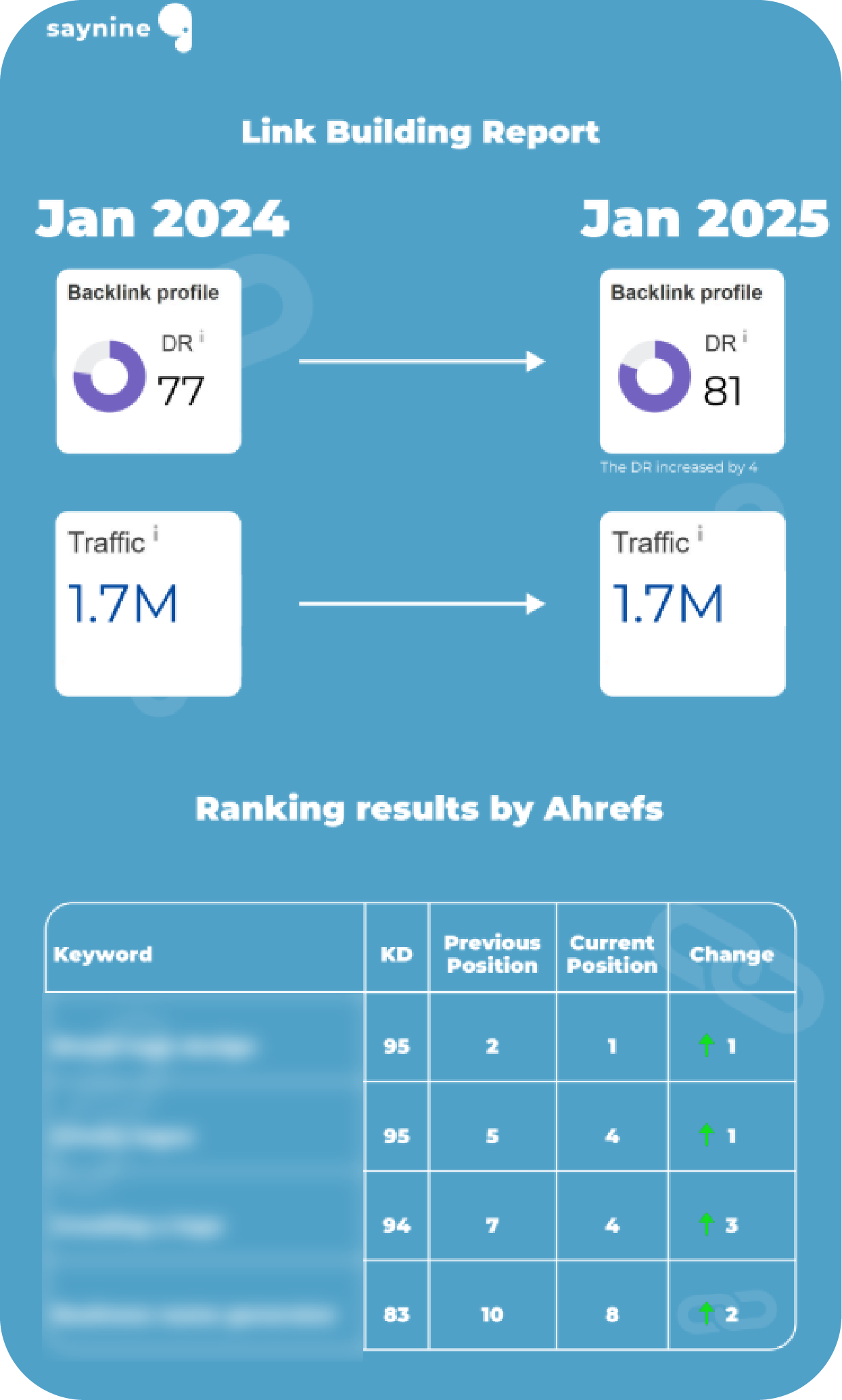
This makes it simple for clients to track their link-building progress and see what results we have achieved.
And, regardless of whether a client is on a contract with us or not, we offer a one-year guarantee on our backlinks.
If anything goes wrong, our clients can always reach out to our Client Success Manager for assistance with recovery or replacements. For a closer look at how we’ve successfully managed this process, check out our link building case study.
Closing Thoughts
And that’s a wrap!
Launching a link building campaign might seem complex, but when you break it down into clear steps, like solid outreach, building good relationships, and clear backlink reporting, it becomes much easier to boost your site’s SEO.
Have any questions or want to get started? Contact us—we’re just a call away!
FAQ about a link building campaign
What is a link building strategy?
A link building strategy is a plan to get backlinks from relevant websites to improve your site’s rankings and overall SEO performance.
Is link building still relevant in 2025?
Yes, link building is still important. Backlinks are a key ranking factor for Google, and along with great content and SEO, they help boost your rankings.
What Google says about link building?
Google favors organic backlinks and discourages excessive direct exchanges. However, three-way (A-B-C) exchanges are safe as long as the backlinks come from relevant sources.
How do you measure link building success?
We measure link building success by tracking key metrics like Domain Rating (DR), traffic growth, and keyword ranking changes to see the real impact.

